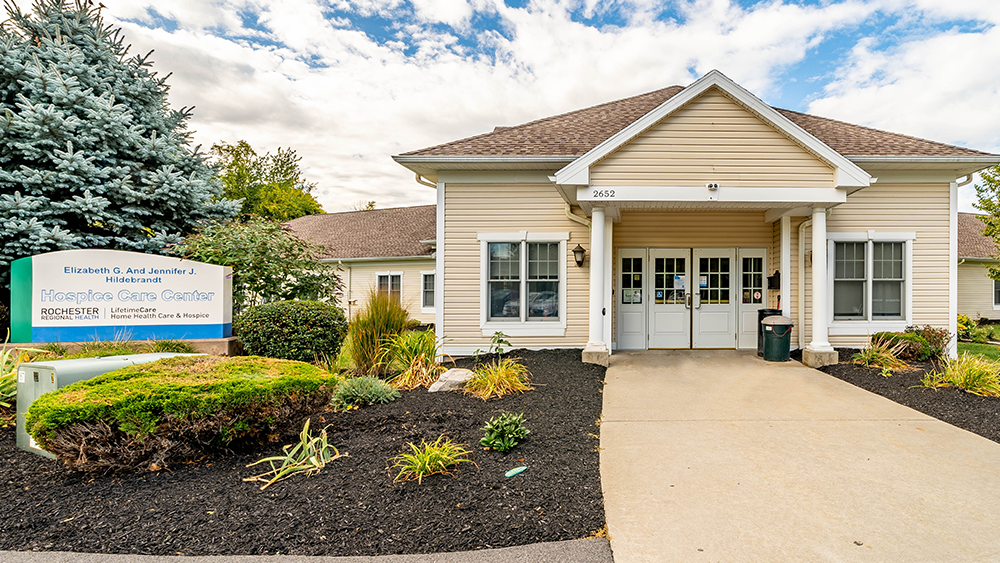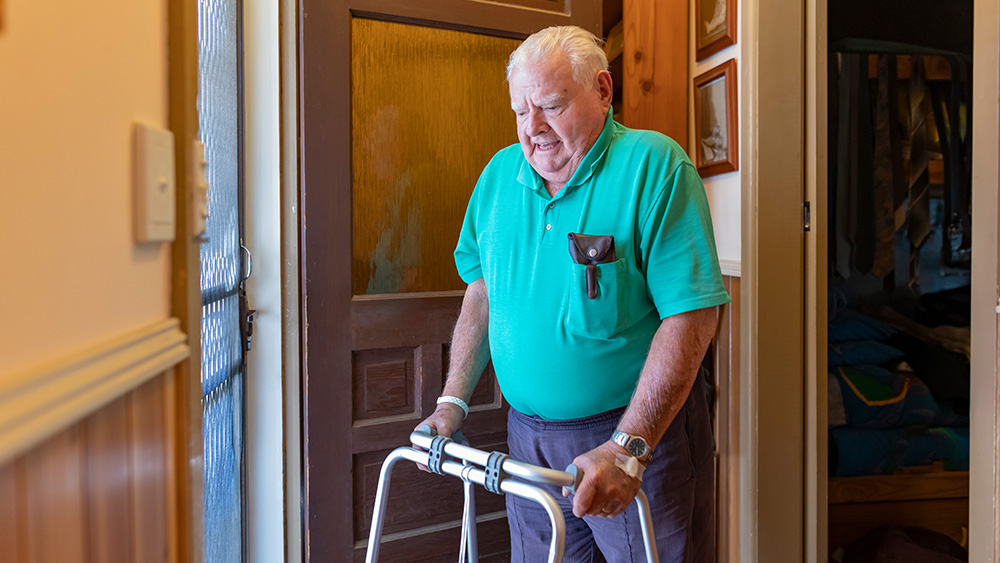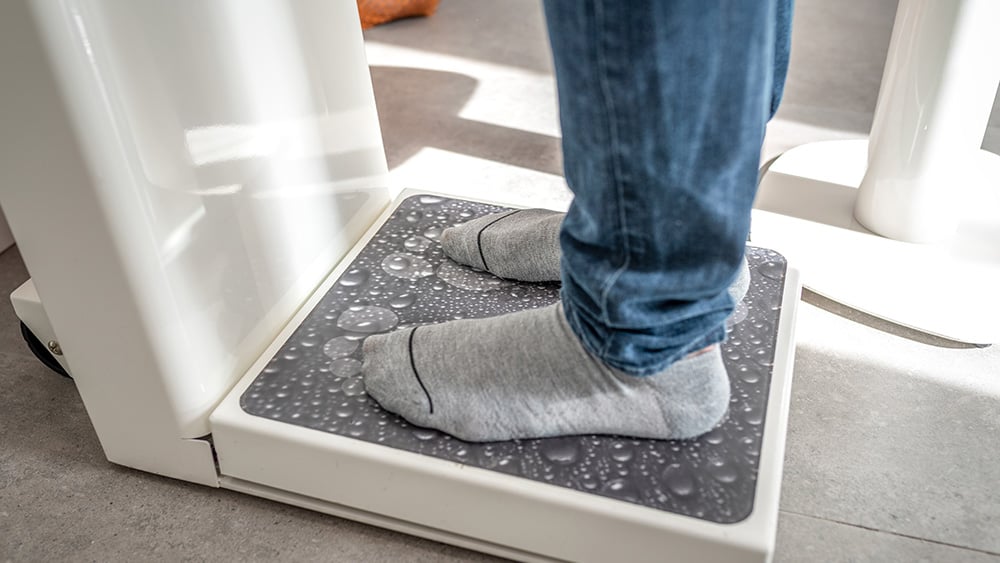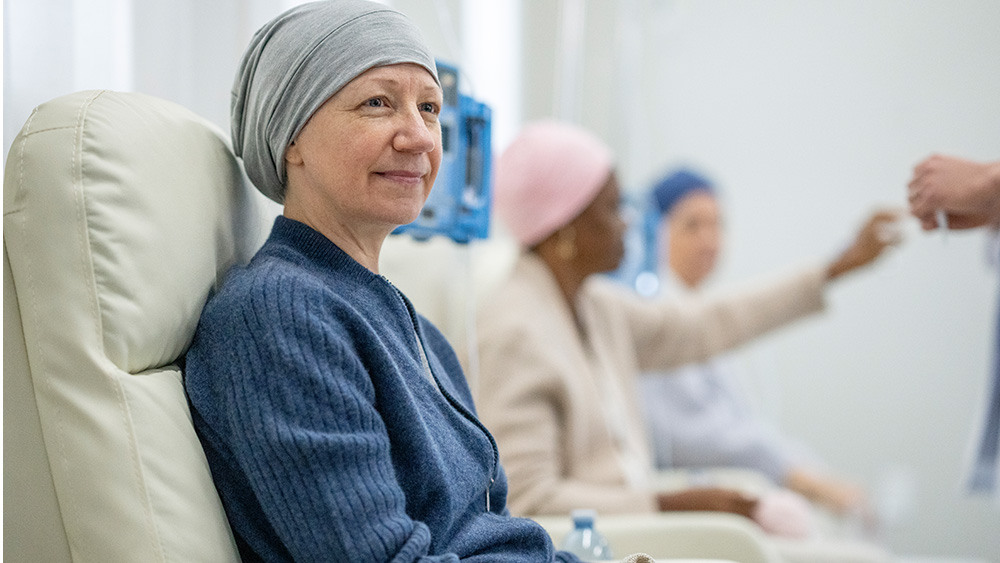Key Takeaways
- Palliative care manages symptoms and offers support for patients with serious illnesses who still want to continue with active medical treatment.
- Hospice care focuses on comfort, managing symptoms, and maintaining quality of life, particularly for patients with a prognosis of 6 months or less to life.
- Hospice and palliative care teams work closely with other specialties to meet the unique needs of each patient.
To help patients navigate serious and life-threatening illnesses, health care workers offer different types of medical care – including hospice and palliative care.
For people who are not familiar with these two forms of care, they may seem very similar. Our Rochester Regional Health Home Care palliative care and hospice teams explain how each type of care helps to support patients at different stages of illness.
Hospice care vs. palliative care
Hospice care
Hospice care is a program for individuals who are living with a life-threatening or terminal illness with a prognosis of six months or less to live. The mission of the hospice care team is to preserve comfort and quality of life by meeting the physical, emotional, psychological, and spiritual needs of patients and their families at the end of life.
Through hospice care, each person is given supportive care wherever they are. While most hospice care happens in the home, it is also offered in comfort-care homes, specialized inpatient units, hospitals, and many nursing homes. Hospice care teams provide comfort using a variety of therapies and services with the goal of meeting the physical, emotional, psychological, and spiritual needs of patients and their families.
Hospice care teams are interdisciplinary and bring together different areas of health care expertise to provide comfort measures for patients who need end-of-life care. Each team includes an attending provider, medical director, nurse, and social worker who provide dedicated primary care and support to a patient and their family.
Depending on the needs and wishes of the patient and family, other team members may include:
- bereavement support staff
- home health aides
- pastoral or spiritual care
- a music therapist
- volunteers for caregiver respite
“No matter the setting, hospice care creates a home-like environment where you can be surrounded by family, friends, and professionals dedicated to maintaining dignity, respect, and compassionate care,” said Erica Fragnito, LMSW, Assistant Director of Hospice and Palliative Care with Rochester Regional Health. “Our mission is to do more by providing holistic support tailored to you and your family’s needs.”
Palliative care
Palliative care focuses on symptom management and support for the patient, while fostering physical, psychological, social, ethical, and spiritual opportunities for healing – all with the goal of empowering patients and their caregivers to navigate and cope with serious illness.
This level of care is provided by a specialized care team in the patient’s home. Palliative care doesn’t require a specific prognosis or a terminal illness; patients usually need more frequent in-person support or have symptoms that require more active care.
Similar to hospice care, a palliative care team usually consists of a nurse and social worker working together, with other providers available as needed. This may include therapists (physical, occupational, speech) or home health aides. Each of these team members communicates regularly with the patient’s medical providers about the patient’s progress and their needs.
“The palliative care team is committed to honoring each patient’s journey with compassion, dignity and respect,” Fragnito said.
Services offered for hospice care and palliative care
Hospice care
Once a patient deemed eligible for hospice care and is enrolled, the patient’s medication are reviewed. Medications that are related to their terminal illness and deemed necessary for ensuring the patient’s ongoing comfort are continued and covered by the hospice agency at no additional cost. Necessary durable medical supplies and equipment such as a hospital bed, walker, wheelchair, or incontinence supplies are also provided through hospice care at no additional cost.
Since the focus of hospice care is to provide comfort measures, hospice care staff do not bring in rehabilitative therapies (physical, occupational, speech), provide diagnostic imaging, allow treatments such as IV fluids, transfusions, ongoing cancer treatment, or long-term dialysis, or use other forms of care that would prolong a patient’s life. Medical visits to providers who are not part of the patient’s hospice care team are also not covered by hospice care.
Hospice care services are not provided at a patient’s home on a 24/7 basis. A hospice team member will be available by phone in case of emergencies. This is explained to the patient and their family before hospice care begins, since it is a common misperception.
Together, the hospice care team educates and empowers caregivers such as friends, family, or additional medical aides to manage a patient’s needs when providers are not at their home. If the patient’s needs exceed the care that can be provided in the home, the hospice team works with the patient and caregivers to find a higher level of care.
Palliative care
Many of the services offered through hospice care are offered through palliative care. Similar to hospice care, palliative care focuses on symptom and medication management. Nurses will continually assess patients and collaborate with their medical providers (primary care provider, specialists, etc.) to manage symptoms such as pain, anxiety, nausea/vomiting, constipation, depression, and shortness of breath.
Palliative care nurses and social workers can assist with advanced directives and long-term planning to help patients determine what their goals are, consider additional treatments or a shift to hospice care, and provide emotional support for patients and their families.
Most services related to palliative care are covered by insurance. However, durable medical equipment (e.g., hospital bed, walker, cane) is not covered through palliative care services. Patients and their families can seek coverage through their medical providers and insurance.
Similar to hospice care, palliative care does not provide 24/7 supervision for patients. However, if a patient is experiencing a health crisis, a palliative care patient may call 911 or go to the hospital for medical evaluation. For hospice care patients, any medical needs or crises will be directed to the hospice team.
Most services in hospice and palliative care will be covered under Medicare or Medicaid. When a person enters the hospice care program, their insurance stops covering many preventative and curative treatments such as primary care visits, specialists, hospital visits, tests, imaging and other treatments, and starts to cover the many supportive services provided by hospice.
When to transition to hospice care
For patients receiving palliative care and their loved ones, the decision to transition to hospice care can be a difficult one. Some patients may see it as a logical next step in their medical care because their disease is no longer treatable or their health is worsening even with all available medical options.
For others, however, even when they qualify and are appropriate for hospice care, they may not want to enroll for many different reasons – especially if they are not ready to accept that they are seemingly in the last stage of life.
The palliative team can continue to provide ongoing support and continued discussion as patients and families navigate this transition. The direction of care may change, but the focus remains on the patient.
“We understand how important it is for each patient and their family to feel supported during a serious illness,” Fragnito said. “Our goal is to ensure them feel comfortable, specially cared for, and surrounded by love.”










